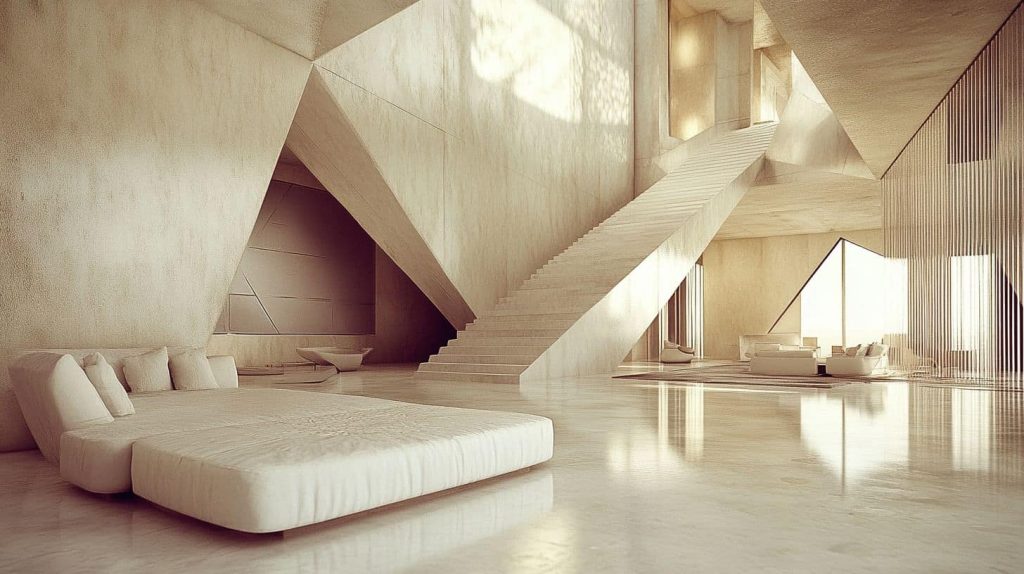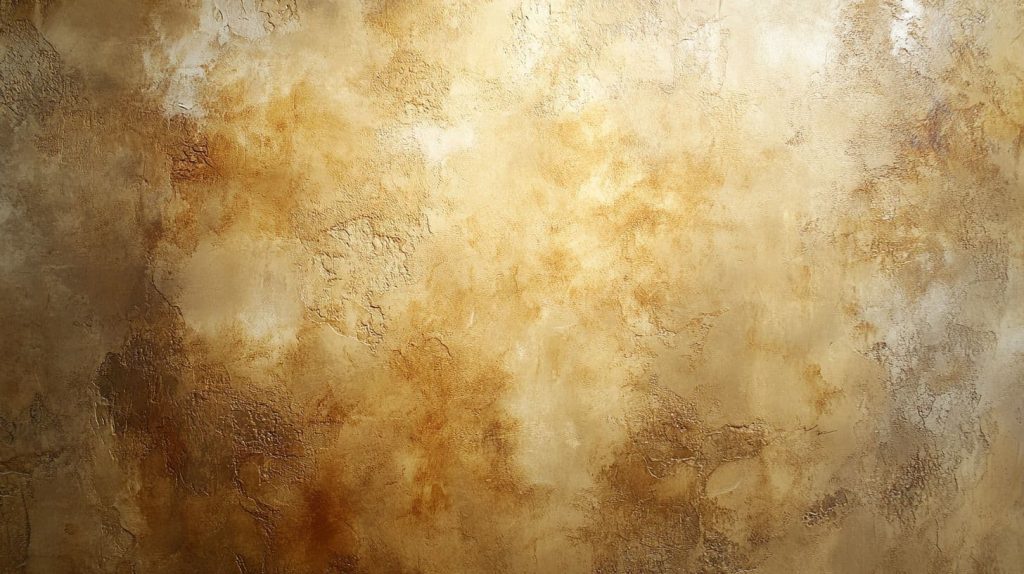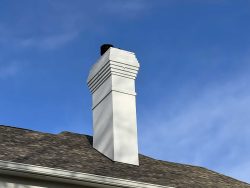Transform Your Space with Timeless Plaster Finishes that Add Depth, Texture, and Lasting Beauty
Are your walls dull and lifeless? Interior plastering can change that. This old technique dates back to ancient Egypt. Our guide shows you new ways to use plaster in modern homes. Get ready to transform your space.
Key Takeaways
- Interior plastering offers many options for modern homes, from smooth to textured finishes.
- Venetian plaster, made from lime and marble dust, costs $10 to $25 per square foot and gives walls a luxurious look.
- Plaster walls are more durable than drywall and can be easily repaired.
- Lime and gypsum plasters are eco-friendly choices that improve indoor air quality.
- Professional plastering services ensure high-quality results for complex projects and repairs.
Understanding Interior Plastering

Interior plastering is an old art that adds beauty to walls. It’s different from drywall and offers more style options.
Definition and history
Plaster is a building material made from lime, gypsum, or cement. It coats walls and ceilings to create smooth or textured surfaces. Ancient Egyptians used plaster in their tombs and pyramids over 4,000 years ago.
Greeks and Romans later adopted it for decorative purposes.
Gypsum plaster became popular in the 19th century. It dried faster than traditional lime plaster. In the 1950s, drywall emerged as a quicker alternative. But plaster remains valued for its durability and unique aesthetic qualities in modern homes.
Comparison with drywall
Building on our understanding of interior plastering, let’s compare it to drywall. These two options differ in key aspects.
| Aspect | Drywall | Plaster |
| Installation | Quick, less labor | Slow, more labor |
| Cost | Less expensive | More expensive |
| Durability | Softer, less crack-prone | Harder, more crack-prone |
| Finish | Level 5 for smooth surface | Various textures possible |
Drywall offers a faster, cheaper option. It needs less work to put up. Level 5 drywall uses many coats and sanding for a smooth look. This process creates an even surface. Drywall is softer than plaster. It resists cracks better. These traits make drywall a popular choice for many homes.
Types of Plaster for Interior Walls

Plaster types shape your home’s look and feel. Each type has its own traits and uses.
Gypsum
Gypsum plaster offers a smooth, durable finish for interior walls. It sets quickly and resists fire, making it a top choice for modern homes. This material comes from natural gypsum rock, ground into a fine powder.
Builders mix it with water to create a paste that hardens fast. The result? Sleek walls that stand up to daily wear and tear.
Homeowners love gypsum for its versatility and ease of use. It takes paint well and allows for creative textures. You can shape it into curves or keep it flat for a clean look. Plus, it’s eco-friendly and helps control indoor humidity.
For a polished interior that lasts, gypsum plaster delivers top-notch results.
Lime
Gypsum’s cousin, lime plaster, offers unique benefits. Lime plaster breathes, allowing moisture to pass through walls. This feature helps prevent mold growth and keeps indoor air fresh.
Lime plaster also hardens over time, becoming stronger and more durable.
Lime plaster is nature’s way of protecting your home.
Lime plaster stands out for its eco-friendly qualities. It’s made from natural materials and absorbs CO2 as it cures. This process makes lime plaster a sustainable choice for modern homes.
Its smooth finish and versatility make it popular among interior designers for creating stunning wall designs.
Cement
Lime plaster offers a classic look, but cement plaster brings strength. This mix of sand, cement, and water creates a tough surface. It resists cracks and moisture well. Builders use it for both indoor and outdoor walls.
Cement plaster lasts long and needs little care. It can take paint or other finishes easily. The material suits modern homes that need sturdy walls. Its smooth finish fits many design styles.
Cement plaster costs less than some other options too.
Innovative Plaster Finishes for Modern Homes

Modern homes need fresh ideas for walls. Plaster finishes offer new ways to make rooms stand out.
Smooth finish
Smooth finish plaster creates a sleek, modern look. It’s perfect for clean, minimalist designs in contemporary homes. This finish needs multiple coats and careful sanding to achieve its flawless appearance.
The process is labor-intensive, making it more expensive than other options.
Smooth plaster walls offer a seamless surface that’s great for accent lighting. They reflect light well, brightening up rooms. Despite the higher cost, many homeowners choose this finish for its elegant and timeless appeal.
It pairs nicely with both bold colors and subtle hues.
Textured finish
Textured plaster adds depth and character to walls. It creates patterns that catch light and shadow, making rooms more interesting. Homeowners can choose from many textures, like swirls, stipples, or rough surfaces.
These finishes hide small wall flaws and add a unique touch to any room.
Applying textured plaster takes skill. The final look depends on the tools and techniques used. Trowels, brushes, and even sponges can create different effects. While textured walls look great, they can be hard to clean.
Dust and cobwebs may stick in the grooves. Regular dusting helps keep textured walls looking their best.
Venetian plaster
Venetian plaster offers a unique, marble-like finish for walls. This luxurious wall treatment costs $10 to $25 per square foot. It blends lime and marble dust to create a smooth, polished surface.
Skilled pros must apply it. The result? Walls that look like fine Italian stonework.
You can customize Venetian plaster to fit your style. It comes in many colors and textures. Some finishes are glossy, others matte. You can even add sparkle or depth. This plaster works well in modern and classic homes alike.
Sand finish
Sand finish adds warmth and texture to walls. It mixes sand particles with plaster for a grainy feel. This finish creates depth and visual interest in rooms. It’s great for hiding small wall flaws.
But sand finish walls are hard to clean. Dust and dirt can stick to the rough surface. Next, let’s explore the pebbledash finish for interior walls.
Pebbledash
Moving from sand finish, we explore pebbledash – a unique texture for walls. Pebbledash adds small stones to wet plaster. This creates a rough, pebbly surface. It’s tough and long-lasting.
Pebbledash needs skilled workers to apply it right. The mix of pebbles and plaster is thrown onto walls. This method is tricky and takes time. Cleaning pebbledash can be hard due to its bumpy surface.
But, it offers a distinct look that many homeowners love.
Scrapped
Scrapped plaster gives walls a unique, worn look. This technique creates a rustic charm by removing parts of wet plaster. Craftsmen use special tools to scrape away layers, revealing texture and depth.
The result? Walls with character and visual interest.
Homeowners love scrapped plaster for its refined appeal. It works well in both modern and traditional spaces. Next, let’s explore another exciting plaster finish: roughcast.
Roughcast
Moving from scrapped finishes, we explore roughcast plaster. This technique adds a rugged, textured look to walls.
Roughcast plaster creates an uneven surface with small stones or pebbles. It’s tough and weatherproof, often used on exterior walls. Inside, it adds depth and character to modern homes.
Skilled workers apply this finish by hand or machine. The result is a consistent, yet unique texture. Repairs can be tricky, so pros usually handle them. Roughcast works well for accent walls or to create visual interest in large spaces.
Benefits of Choosing Plaster for Interior Design
Plaster offers more than just a pretty face for your walls. It brings strength, style, and eco-friendly perks to your home.
Aesthetic versatility
Plaster offers endless design options. You can create smooth, sleek walls or add texture for depth. It takes on any color, from soft pastels to bold hues. Plaster works in modern homes and classic spaces alike.
Its versatility lets you match any style or mood.
Next, we’ll explore the durability and repair benefits of plaster.
Durability and repair
Plaster walls stand tough against daily wear. They resist cracks and dents better than drywall. Fixing small issues is easy. A quick patch job often does the trick. Plaster’s strength means fewer repairs over time.
This saves money and keeps homes looking great. The long-lasting nature of plaster makes it a smart choice for busy households. Next, let’s explore the eco-friendly aspects of plaster in modern homes.
Environmental benefits
Lime plaster offers eco-friendly benefits for modern homes. It absorbs CO2 as it dries, reducing carbon footprint. This natural material also regulates indoor humidity, creating a healthier living space.
Lime plaster walls breathe, allowing moisture to pass through and preventing mold growth.
Gypsum plaster, another green option, is recyclable and uses less energy to produce than drywall. It improves air quality by filtering pollutants and odors. Both lime and gypsum plasters are free from harmful chemicals, making them safe choices for eco-conscious homeowners.
Applying Interior Plaster: A Step-by-Step Overview
Applying plaster needs care and skill. You’ll need the right tools and methods to get a smooth finish.
Preparation phase
Clean walls are crucial for good plaster results. Start by removing old paint, wallpaper, and debris. Fill holes and cracks with joint compound. Sand the surface smooth. Apply a primer to ensure even absorption.
Cover floors and furniture with drop cloths. Tape off areas you don’t want plastered.
Proper tools make the job easier. Gather trowels, hawks, mixing buckets, and sandpaper. Get safety gear like goggles and dust masks. Mix plaster according to package directions. Let it sit for a few minutes before use.
This prep work sets the stage for a smooth plastering process.
Application techniques
Plaster application needs skill and the right tools. Pros use trowels to spread base coats evenly on walls. They apply thin, smooth second coats with flat blades. Some techniques create texture.
Sponges make swirls, while combs create lines. Spray guns work for large areas fast.
Timing matters in plaster work. Each coat must dry before the next goes on. Pros often mist walls between layers for better bonding. They sand rough spots and polish smooth finishes.
These steps make walls look great and last long.
Finishing touches: Skim coat, sand, and polish
Skim coating smooths out wall surfaces. It covers small flaws and creates a uniform base. After the skim coat dries, sanding begins. This step removes bumps and rough spots. Sanding and polishing give walls a sleek look.
The final polish brings out the plaster’s shine and depth. These steps turn plain walls into stunning features. They create a perfect canvas for paint or other finishes.
Proper tools make a big difference in the final result. Use fine-grit sandpaper for a smooth finish. A trowel helps apply the skim coat evenly. Polishing pads bring out the plaster’s natural luster.
These finishing touches transform ordinary walls into works of art. They add value and beauty to any room.
Decorative and Functional Enhancements
Plaster walls can be both pretty and useful. You can make accent walls, add texture, or mix in colors. These tricks turn plain walls into eye-catching features. Want to learn more cool ways to use plaster? Keep reading!
Accent walls
Accent walls add drama to rooms. They create a focal point with bold colors or textures. Designers use accent walls to highlight architectural features or artwork. Popular options include bright paint, patterned wallpaper, or textured plaster.
These walls break up monotony and inject personality into spaces.
Venetian plaster works great for accent walls. Its smooth, polished finish adds depth and luxury. You can tint it in rich hues or leave it natural for a subtle effect. Accent walls with Venetian plaster bring warmth and coziness to modern interiors.
They blend traditional charm with contemporary style.
Adding depth with textured plaster
Textured plaster adds depth to walls. It creates visual interest and tactile appeal. Rough or smooth finishes offer unique looks. Patterns like swirls or stipples catch light in fun ways.
This technique works great for accent walls or whole rooms.
Plaster depth brings character to spaces. It can mimic stone, concrete, or fabric textures. Special tools create custom patterns. Colors mixed into plaster give rich, lasting hues.
Textured plaster hides wall flaws and adds soundproofing benefits too.
Integrating color and design elements
Textured plaster adds depth to walls. Now, let’s explore how color and design boost this effect.
Color breathes life into plaster walls. Bold hues create drama, while soft tones soothe. Patterns and stencils add visual interest. Metallic finishes catch light and sparkle. Ombre effects blend colors for a dreamy look.
Plaster takes paint well, making colors more vibrant. Mix pigments into wet plaster for a unique, lasting color. Geometric shapes or nature-inspired designs can transform plain walls.
Light fixtures cast shadows on textured surfaces, adding depth. Accent walls draw the eye and define spaces. The options are endless with plaster’s versatility.
Venetian Plaster: An Eco-Friendly Wall Finish for Interior Plastering Projects

Venetian plaster offers a green option for wall finishes. It’s made from lime and marble dust, making it eco-friendly. This plaster brightens rooms with its reflective surface. It’s both elegant and tough, lasting for years.
Indiana Wall Systems provides Venetian plaster services. This finish adds depth and texture to walls. It works well in modern and classic designs. Venetian plaster needs little upkeep, saving time and money.
Its smooth surface resists dirt and is easy to clean.
Professional Interior Plastering and Ceiling Restoration
Professional plastering needs skilled experts. Indiana Wall Systems offers Venetian plaster finishes. These high-end finishes cost $10 to $25 per square foot. Complex repairs demand expert handling.
Pros use special tools and methods for smooth, durable results. They know how to mix and apply different plasters correctly. Ceiling restoration often involves fixing cracks, water damage, or old paint.
Experts can match textures and colors to blend repairs seamlessly. The next section will explore how plaster can enhance your home’s design.
Conclusion
Interior plastering offers endless options for modern homes. From smooth finishes to textured walls, each style adds a unique charm. Venetian plaster brings luxury, while roughcast creates a cozy feel.
These techniques transform spaces into works of art. Explore these ideas to make your home stand out. Reach out to Indiana Wall Systems today for more information.
FAQs
What’s Venetian plaster, and why’s it popular in modern homes?
Venetian plaster is a decorative finish that adds depth to walls. It’s trendy in modern homes for its smooth, polished look and low upkeep. This plaster stands out for its rich texture and timeless appeal.
How does Venetian plaster differ from other wall finishes?
Unlike paint, Venetian plaster creates a textured surface. It’s more durable and adds a luxe feel. This plaster allows for unique colors and finishes, perfect for both classic and modern designs.
Can Venetian plaster work in any room?
Yes! Venetian plaster is great for all spaces. It’s ideal for living rooms, bedrooms, and even bathrooms. The plaster acts as a shield, making walls water-resistant and easy to clean.
What design styles work best with Venetian plaster?
Venetian plaster fits many styles. It shines in modern, minimalist spaces. But it also adds charm to rustic or traditional rooms. Its versatile nature makes it a top choice for any design aesthetic.
Is Venetian plaster hard to apply?
Applying Venetian plaster needs skill. While DIY is possible, pros often get the best results. The process involves layering and smoothing the plaster. Getting that perfect finish takes practice and the right tools.
How long does Venetian plaster last?
With proper care, Venetian plaster can last for decades. It’s known for its durability and resistance to wear. Unlike paint that may need frequent touch-ups, this plaster keeps walls looking fresh for years.





